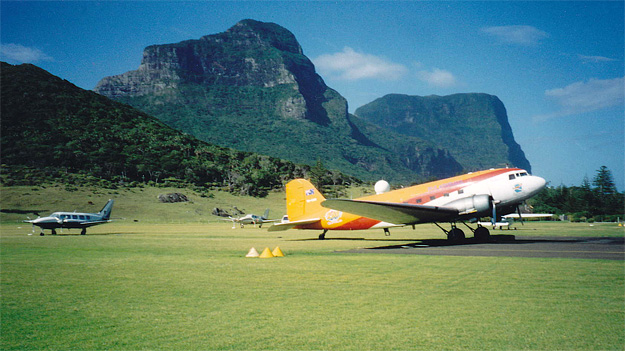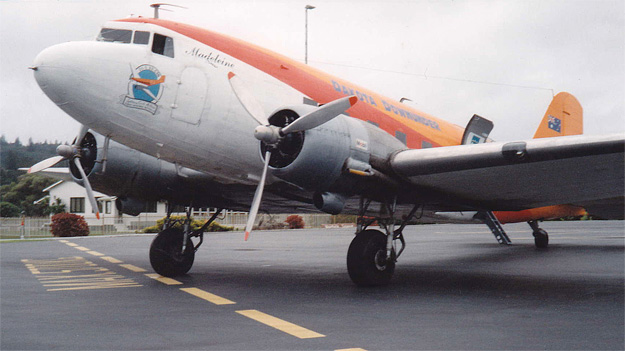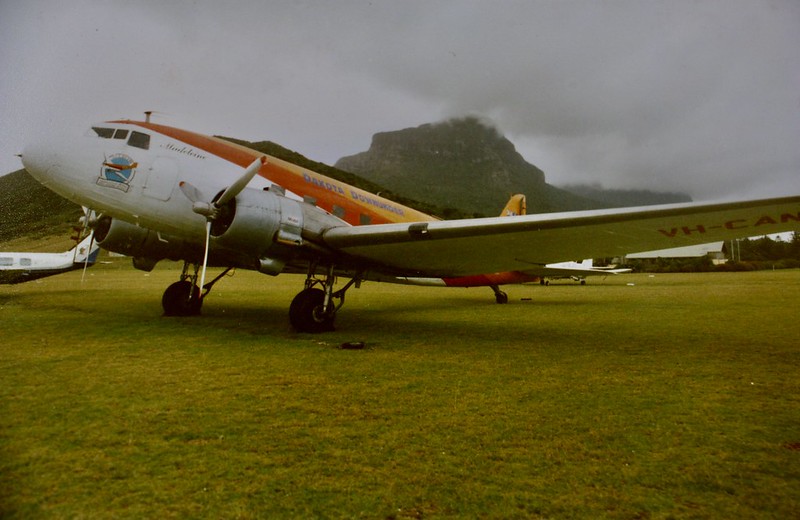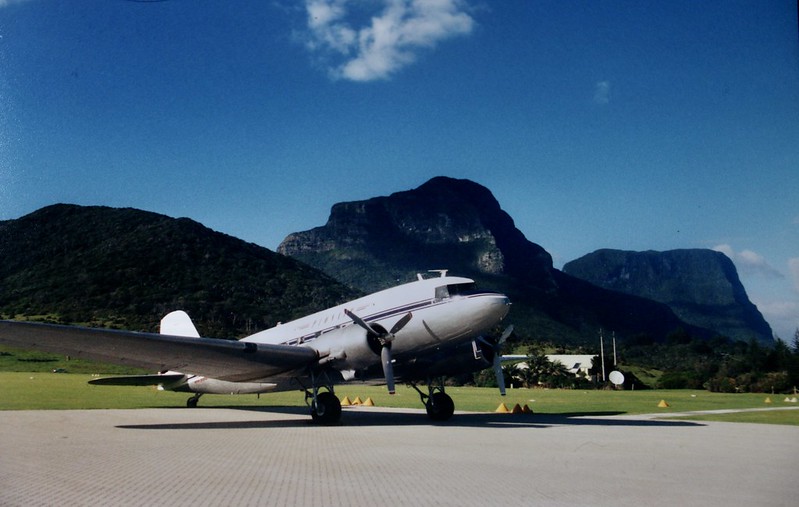|
|
Post by Bruce on May 24, 2021 17:01:23 GMT 12
Looks like he did a bit of sightseeing on the 5th... "Boulder Dam" is the great Hoover Dam, which would have been a very new marvel at the time, worth having a look at on a shakedown flight!
|
|
|
|
Post by Dave Homewood on May 24, 2021 17:47:30 GMT 12
Oh yes, good spotting Bruce.
|
|
|
|
Post by tbf2504 on May 25, 2021 11:47:12 GMT 12
Dave, there is often a discrepancy between actual delivery dates (as per log book or squadron records) and the AF380 aircraft register. This normally came about as an administration function by the
grocers getting around to doing the official paperwork accepting the aircraft and all its accompanying ancillary equipment, and entering it manually (in those days)into the AF380 and other required
documentation (F700/F701)
|
|
|
|
Post by Dave Homewood on May 25, 2021 13:21:08 GMT 12
Yes, but if you look at his logbook and then the ORB, I'm sure he forgot to log that Whenuapai to Rukuhia flight.
|
|
|
|
Post by tbf2504 on May 25, 2021 15:44:05 GMT 12
Dave, yes you right. I have come across this before with returning Corsairs at the end of the war, where the pilot logged the islands-whenuapai (port of entry) flight but not the final devlivery
to Rukuhia. Some were delivered by other pilots from Whenuapai, but often by the same ex island delivery pilot
|
|
|
|
Post by Dave Homewood on May 25, 2021 21:46:04 GMT 12
They were probably running on empty after such a long haul, and just wanted to get a beer and a sleep.
|
|
|
|
Post by tbf2504 on May 26, 2021 9:38:25 GMT 12
Most of the delivery pilots went on end of service leave immediately after their flight to Whenuapai or to Rukuhia, and apart from discharge administration that was their last service duty
|
|
|
|
Post by davidd on May 26, 2021 10:27:56 GMT 12
Reason for using the US Navy name for the C-47 (that is, R4D) was that the military airways across the Pacific from California were generally under US Navy control, so all identification of aircraft on documentation and in communications in flight would have used that moniker wherever the question "Aircraft type" came up, on documents or in R/T or W/T conversations. The file on C-47 deliveries frequently includes "R4Ds" whereever aircraft W/T messages are included, although the call-signs they used were the USAAF serials, or "tail-numbers". Along the lines of, "When in Rome, .....", obviated Navy communications personnel having to ask you again, "Repeat aircraft type sir?"
David D
|
|
|
|
Post by Dave Homewood on May 26, 2021 10:31:58 GMT 12
Oh that makes perfect sense, thanks David. Just like in the Pacific our Hudson crews had to refer to their aircraft as PBO's.
|
|
|
|
Post by davidd on May 26, 2021 13:49:25 GMT 12
Exactly, the shrimp in the pool has to be very certain that all the big boys who dominate that pool can understand his language, and know that he means them no harm, and can ever be quite helpful.
David D
|
|
|
|
Post by kevsmith on May 26, 2021 14:09:59 GMT 12
Re the post about having to use the appropriate aircraft designation when in a different jurisdiction;
Would you believe that there is an Air Traffc Controller in Melbourne that gives our DC3 as traffic to other aircraft as a "Skytrain"
Maybbe he is trying to make a point of his obsolete aircraft knowledge even though we always flight plan as a DC3 (Its VH-OVM - a DC3C-R-1830 model according to it's registration details).
We chip him on this but the next time we encounter him he is back to his Skytrain past!
|
|
|
|
Post by tbf2504 on May 26, 2021 15:58:04 GMT 12
A quick story regarding C-47/DC3's and airways. In 1993 when in Somalia, I got talking to the crew of a Turboprop converted DC3 which had come across the Atlantic and the Middle East. The captain told me that
when talking to airways part way across the Atlantic at an altitude of FL280, the controller when told the aircraft type said "DC3's can't go that high, confirm type!" The captain then explained
that it was a turbo prop conversion and the crew had individual oxygen to allow the aircraft to make the best of the winds at that altitude.
|
|
|
|
Post by aircraftclocks on May 28, 2021 11:04:21 GMT 12
From the Fleet Air Wing, April 45 war diary.
The principal transient ferry flights handled by the Wing were those of the Royal Australian Air Force (23 PB2B-2's) and the Royal New Zealand Air Force (6 R4D's). These flights were serviced and briefed by the Wing, which controlled and maintained radio guard over them until they passed the 140th Meridian West Longitude and were taken under guard of Fleet Air Wing TWO.
|
|
|
|
Post by chbessexboy on Oct 25, 2021 1:53:51 GMT 12
Seen when passing through Shannon on Saturday, 16th October 2021:  |
|
|
|
Post by planewriting on Oct 25, 2021 7:37:26 GMT 12
Well that was surely a precision landing... ZK-APK was one of those which ground looped at Mangere when arriving from Whenuapai for the official opening in January 1966
|
|
|
|
Post by planecrazy on Oct 25, 2021 18:17:26 GMT 12
I received the following email tonight from forum member Kev Smith:   Bit late to the party, found an old pic's her during that visit.  And a couple more, does anyone know the rego of this one?  Another one.  |
|
|
|
Post by Dave Homewood on Aug 27, 2022 16:44:55 GMT 12
Old reliable calls it a dayOld reliable — the Dakota DC3 aircraft used by the Royal New Zealand Air Force to carry freight, troops, and VIPs since the early 1940s — will not fly again in New Zealand colours. In front of a nostalgic crowd of nearly 500 former Air Force Dakota aircrew and well wishers, the R.N.Z.A.F.’s last two Dakotas were officially retired at Ohakea earlier this month. The Dakota was used by the R.N.Z.A.F. for 34 years, only two years less than the Harvard, which was retired earlier this year. The Dakota is one of the most famous transports of aviation history, and was rated by General Eisenhower as one of the four pieces of equipment (the others were the jeep, the bazooka and the atomic bomb) which contributed the most to the Allied victory in World War II. First flown in 1935, the aircraft was designed as a successor to the revolutionary DC2, and many, as DC3s, were delivered to airlines in the late 1930s. But of more than 10,000 built in the United States, all but a few hundred were completed as military transports. Many were also built in Japan and the Soviet Union. One of the main United States military versions was the C-47 Skytrain, and although the R.N.Z.A.F. machines were obtained from the United States as C-47s, New Zealand adopted the name used in the Royal Air Force, “Dakota." In 1949 three aircraft of No 41 Squadron were deployed to the Far East to drop supplies for the Commonwealth forces in the Malayan Emergency. Thus began the long association of No 41 Squadron with Singapore, an association which will end when the squadron is disbanded on December 6. During most of its time in Singapore, however, the squadron has been equipped with the Bristol Freighter, and it was the introduction of this aircraft to R.N.Z.A.F. service in late 1951 that began to spell the end of the Dakota as the main military transport in New Zealand. By mid-1953 the usurpation was complete, but two aircraft, NZ3551 and NZ3553, were retained for VIP tasks. Both aircraft were completely refurbished, NZ3551 lavishly so, for it carried the Queen and the Duke of Edinburgh on the 1953-54 Royal Tour. These two Dakotas continued to be used as VIP transport to the day of their retirement — which had to be postponed earlier in the year because of delays in completing the VTP interior of one of the recently acquired Andover C1s. During the late 1960s the VIP pair were rejoined by four of their sisters, returned from N.A.C. The first to don uniform again, NZ3546, was modified as a drogue-towing aircraft to provide gunnery practice, particularly for naval vessels. Of the other three, one was retained in N.A.C. configuration and was used to carry staff and mail between bases in New Zealand, and the other two were fitted out for training paratroopers. The first R.N.Z.A.F. models were flown out from the United States in February, 1943, and by war’s end a total of 49 had been delivered to form the equipment of Nos. 40 and 41 Squadrons. War-time service was steady, but largely unspectacular, and required frequent routine flights to the Pacific Islands to deliver men, material and mail to the forward area. At the end of the war a shuttle was set up to repatriate prisoners of war from Singapore, and schedules to Japan began later, to deploy and maintain No 14 Squadron (Corsairs) as part of the British Commonwealth Occupation Forces. In New Zealand, aircraft of No. 40 Squadron were used to re-establish the internal air routes until 1947, when the squadron was disbanded and the National Airways Corporation was formed. For many of the crews and aircraft, the formation of N.A.C. meant the same work, but a different uniform or paint scheme. In all, N.A.C. used 29 Dakotas, 26 of them former R.N.Z.A.F. aircraft. Many were bought by N.A.C. but some were issued on loan and years later found their way back into military colours. 
THE LAST FLY-PAST  The leader of the Dakota formation. Squadron Leader Bob Gilbert, of Auckland, surrenders the aircraft log books to Air Vice-Marshal C. L. Siegert. Other crew members visible are Flight Lieutenant Garry Wrathall, of Tauranga, and Flying Officer Andy Russell, of Auckland.  Dakota NZ3546, one of the most historic of the R.N.Z.A.F. Dakotas. As 40 Squadron’s flagship, she flew the New Zealand delegation to Tokyo for the Japanese surrender. She served 41 Squadron for the Malaysian Emergency, then flew 1600 hours for N.A.C. before returning to the R.N.Z.A.F. PRESS, 26 NOVEMBER 1977
|
|
|
|
Post by Dave Homewood on Aug 27, 2022 16:49:27 GMT 12
Preserving a Dakota
New Zealanders are an air-minded people; they probably use scheduled passenger services as much as the people of any other nation and they employ aircraft for many other purposes. The country’s museums should reflect this aspect of our national life. The Government should, therefore, heed the representations of those who are urging that one of the six Dakotas no longer required by the R.N.Z.A.F. should be kept in public ownership. Of all planes, the Dakota deserves a place in one of the country’s growing museums of transport and technology. Better still, one of the aircraft should be kept as a flying memorial. The Dakotas have seen more than three decades of service with the R.N.Z.A.F. and the similar DC3 had service almost as long with N.A.C.. Some are still in use today, especially for agricultural work.
The Minister of Defence, Mr McCready, who has yet to be persuaded to withdraw one of the surplus Dakotas from the proposed sale, may agree that it is important to have relics which reflect all aspects of the country’s past to inform future generations. Preservation of one machine would delight many people with a bent for nostalgia; and if an economic reason for a museum-piece is needed, the exhibit is likely to appeal to tourists from abroad, few of whom could see such a well-preserved example of this classic aircraft elsewhere.
PRESS, 8 DECEMBER 1977
|
|
|
|
Post by Peter Lewis on Sept 23, 2022 9:16:17 GMT 12
|
|
|
|
Post by Deleted on Sept 23, 2022 13:35:25 GMT 12
And I was so curious about the owner's intentions for it. Let's hope she finds a good home.
|
|



